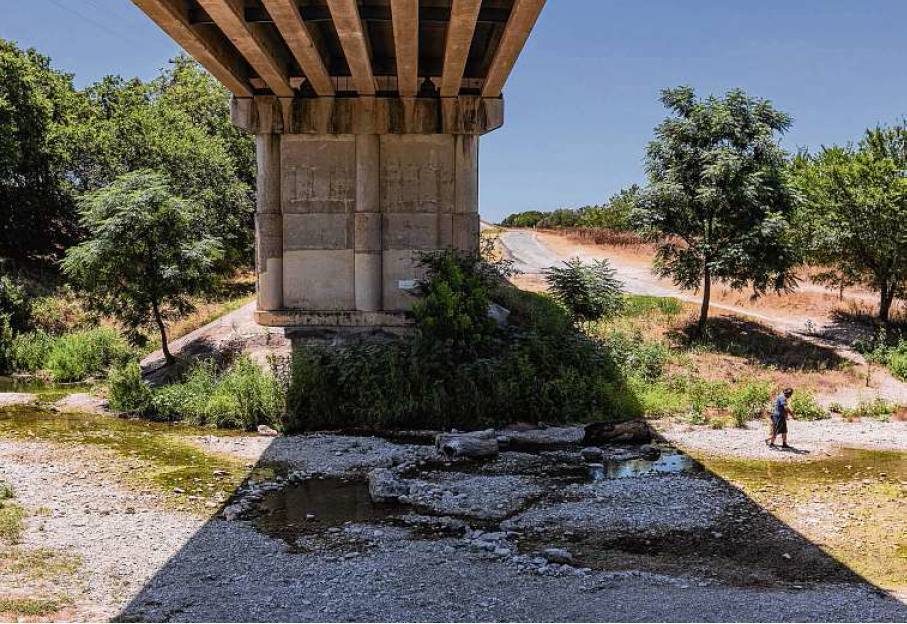‘Extreme’ drought in nearly 50% of county
Areas affected by heat wave show dramatic drop in water availability
By Anthony Franze STAFF WRITER
After being held captive by 100-degree temperatures for two straight weeks, San Antonio is under siege by a resurgent Texas drought.
In South Texas, the drought has taken a big step in the wrong direction over the past several weeks. The heavy rain we saw back in April and May is a distant memory, and the city has been baking under triple-digit temperatures every day since July 8. Major changes have taken place in this week’s update from the U.S. Drought Monitor, and none of it is good news.
Last week’s data from the Drought Monitor, released on July 13, showed that only 5 percent of Bexar County was under “extreme” drought, which typically means an increased risk of large wildfires, crop failures or decreased crop yields, cracked soil and significant shortfalls in reservoir levels.
Fast forward to this week’s update, and nearly half of the county, up to 44 percent, is under extreme drought, particularly the northern and western portions of the county. Data from the National Integrated Drought Information System estimates that about 1.7 million are affected by drought in Bexar County. If we don’t see significant rainfall soon, the whole county could move into extreme drought within weeks.
The U.S. Drought Monitor, a joint effort between the National Drought Mitigation Center, the National Oceanic and Atmospheric Administration, and the U.S. Department of Agriculture, uses variables such as precipitation, soil moisture and water levels to determine drought levels across the country.
Bexar County is just one step away from “exceptional” drought, the U.S. Drought Monitor’s driest category, which is characterized by historically low water levels, poor water quality and algae blooms, widespread crop and tree loss, and extreme sensitivity to wildfire danger.
Unsurprisingly, a driving factor in the worsening drought conditions has been the lack of rain in South Texas, especially since the transition from spring to summer. Since June 1, only about an inch of rain has fallen at San Antonio International Airport. On average, the Alamo City receives 5.15 inches of rain between June 1 and July
20.
That means we are about 4.11 inches below average since the start of June. It’s a shortfall that makes up most of the 5.1-inch rainfall deficit San Antonio faces for all of 2023 to date.
When the drought becomes this dramatic, fire risk also becomes much more apparent. Dry ground and vegetation can act as fuel for fires to rapidly intensify and spread. Wind speed and humidity levels also play big roles in fire danger.
This week in San Antonio, relative humidity values are dropping to near 25 percent in the afternoons and wind gusts are reaching over 20 mph every day. Put it all together, and we have moderate to high fire risk in South Texas, according to the Texas A&M Forest Service.
Outdoor burn bans remain in place for 107 of 254 Texas counties, including Comal, Kendall and Wilson counties.
The current Texas drought does not show any signs of letting up. While high atmospheric pressure is starting to move west a bit, allowing rain chances to develop over the weekend, those chances will stay around a slim 20 percent.
Even if you’re lucky enough to catch an isolated shower or storm, rainfall totals will stay on the low side with minimal effect on the drought.

